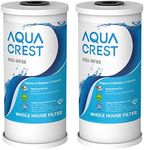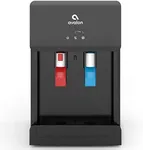Buying Guide for the Best Water Dispensers
Choosing the right water dispenser can make your daily hydration routine much more convenient and enjoyable. Before you buy, think about where you’ll use it (home, office, kitchen, or outdoors), how many people will use it, and what features matter most to you. Understanding the main specifications will help you find a dispenser that fits your needs and lifestyle.Type (Top-Load, Bottom-Load, Bottleless, Countertop)The type of water dispenser refers to how it is set up and how it gets its water. Top-load dispensers require you to lift and place a water bottle on top, which is simple but can be heavy. Bottom-load dispensers hide the bottle in a lower compartment, making it easier to change bottles and keeping things tidy. Bottleless dispensers connect directly to your water supply, so you never have to replace bottles, but they need installation and a water line. Countertop models are smaller and sit on a table or counter, saving floor space but usually holding less water. Choose the type based on your space, strength, and whether you want to deal with bottles or prefer a direct water line.
Water Temperature OptionsWater dispensers can offer cold, hot, or room temperature water, or a combination of these. Some only provide cold and room temperature, while others also have a hot water option for making tea or instant meals. If you want to use your dispenser for more than just drinking cold water, look for models with multiple temperature settings. Think about your daily habits—if you often make hot drinks, a hot water feature is useful, but if you only want chilled water, a simpler model may be enough.
CapacityCapacity refers to how much water the dispenser can hold or dispense before needing a refill or bottle change. For bottle dispensers, this is usually 3, 4, or 5 gallons. For bottleless models, it’s about how much water the internal tanks can chill or heat at once. If you have a large family or office, a higher capacity means fewer refills and less hassle. For smaller households or personal use, a lower capacity is usually fine and takes up less space.
FiltrationSome water dispensers come with built-in filters to improve the taste and quality of your water by removing impurities. This is especially important if you’re using tap water or want to ensure the cleanest water possible. Filtration systems can range from basic carbon filters to more advanced multi-stage filters. If water quality is a concern for you, look for dispensers with good filtration and check how often filters need to be replaced.
Child Safety FeaturesHot water dispensers can pose a burn risk, especially in homes with children. Many models include child safety locks on the hot water tap to prevent accidental burns. If you have young kids or expect children to use the dispenser, make sure to choose a model with reliable safety features.
Ease of Cleaning and MaintenanceKeeping your water dispenser clean is important for health and taste. Some models have removable drip trays, self-cleaning features, or easy-access parts for cleaning. If you want to spend less time on maintenance, look for dispensers that are designed for easy cleaning. Think about how often you’re willing to clean and whether you prefer a model that helps with this task.
Size and PlacementThe size of the dispenser affects where you can put it. Floor-standing models need more space, while countertop versions are more compact. Measure your available space before buying and consider how much room you have for the dispenser and for changing bottles or accessing the water taps. Pick a size that fits comfortably in your chosen spot.
















